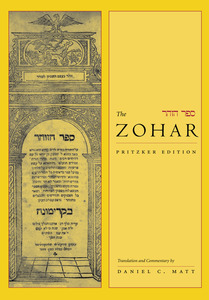About the Project
Ever since it emerged mysteriously in Castile, Spain toward the end of the 13th century, the Zohar has enthralled, confounded, challenged, and enraptured readers. Composed mostly in lyrical Aramaic, the Zohar is a mosaic of Bible, medieval homily, spiritual fantasy, and imaginative commentary, or midrash, on the Torah written in the form of a mystical novel. In it a group of rabbis wander through the hills of Galilee, discovering and sharing secrets of Torah: at times they interpret the actions of biblical figures, and at other times, they take center stage themselves through their adventures on the road and their encounters with various astonishing characters. The scope of the Zohar is far greater than a single book; it is virtually an entire body of literature, whose central theme is the intimacy between human beings and God. In this lies one of the Zohar's boldest propositions, the capacity of the human being to effect change in the divine realm. Awestruck by the profundity of its insights, symbolism, and dreamlike images, Jews in many lands over the centuries have come to accept the Zohar as revealed truth—no less sacred than the two other major texts of their religion, the Torah and the Talmud. And yet, until now, there has never been a fully reliable comprehensive, scholarly English translation of this revered work with line-by-line commentary.
In a monumental undertaking, Daniel C. Matt, one of the world's foremost authorities on
Jewish mysticism, has spent 20 years creating a 12-volume, annotated English translation of
the Zohar.
This is the first
translation ever made from a critical Aramaic text of the Zohar, which
has been established by Professor Matt based on a wide range of original
manuscripts. The extensive commentary, appearing at the bottom of each page,
clarifies the kabbalistic symbolism and terminology, and cites sources and
parallels from biblical, rabbinic, and kabbalistic texts. The translator's
introduction is accompanied by a second introduction written by Arthur Green,
discussing the origin and significance of the Zohar.
For a comparison of the organization of The Zohar: Pritzker Edition to the standard printed Aramaic editions (and specifically the Margaliot edition), please see this chart and the accompanying explanation.
